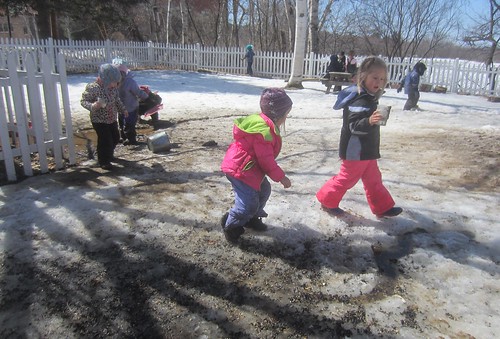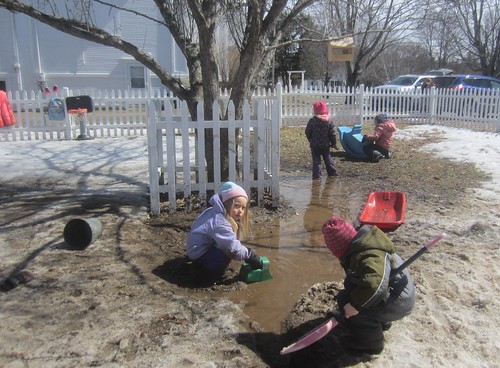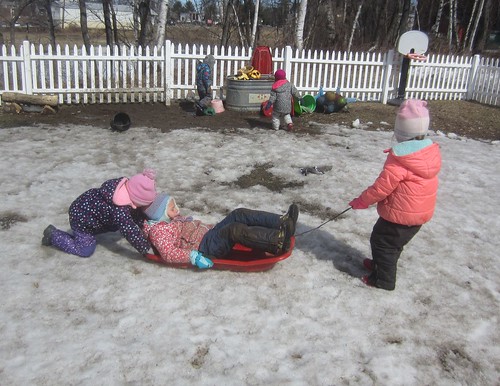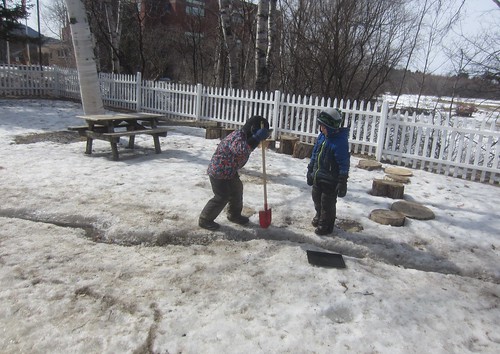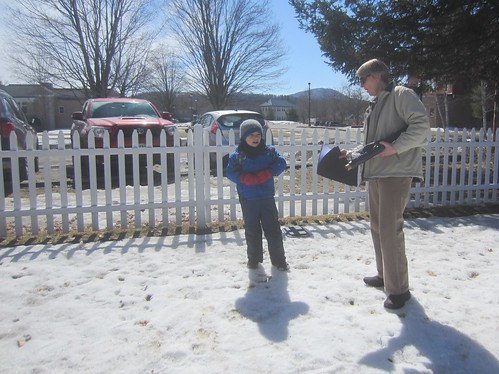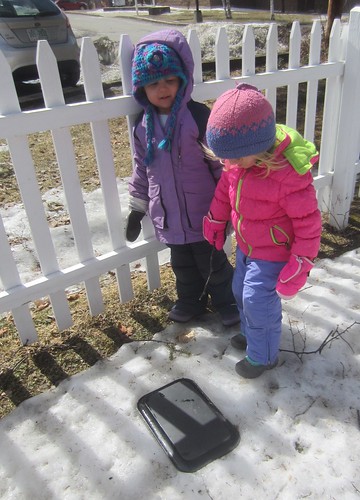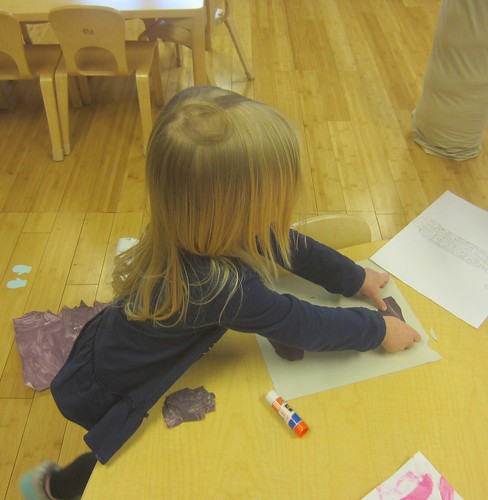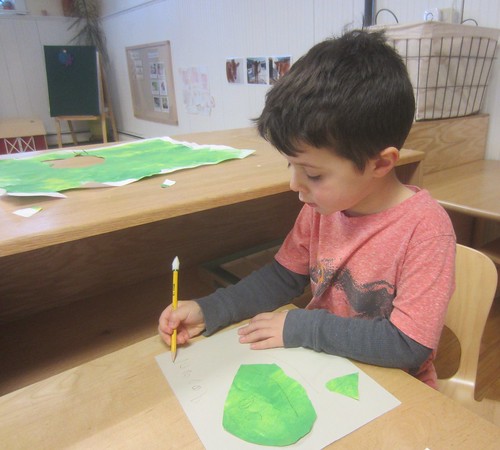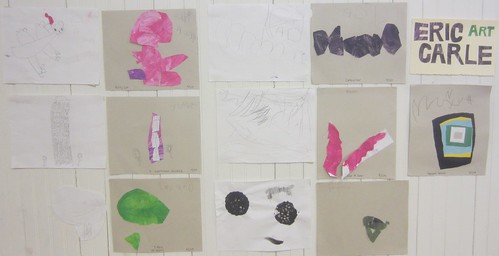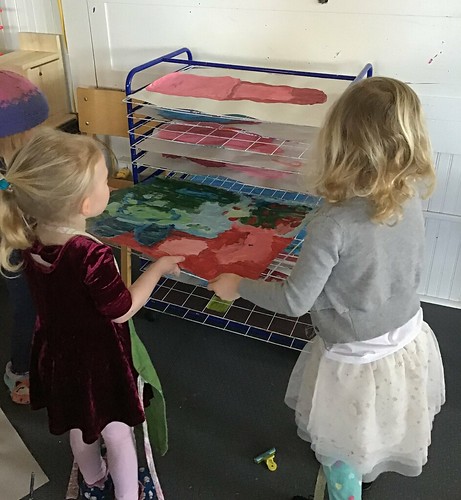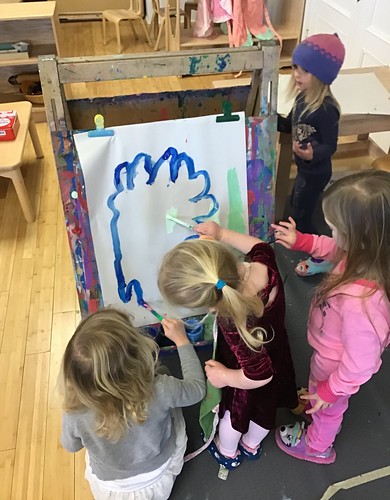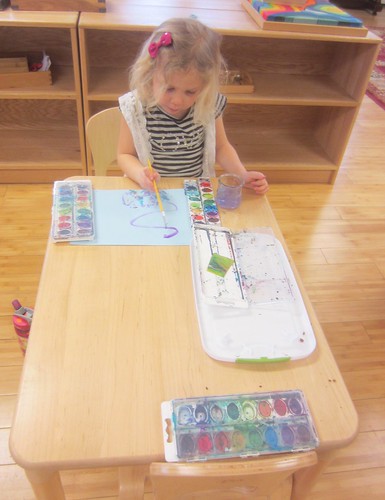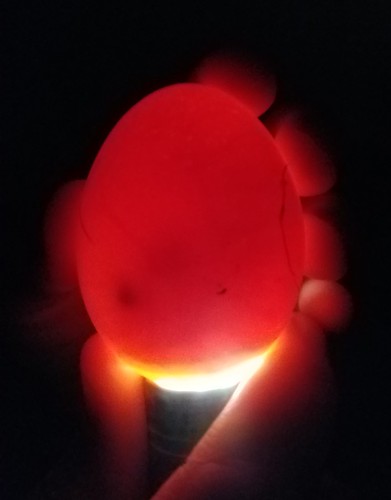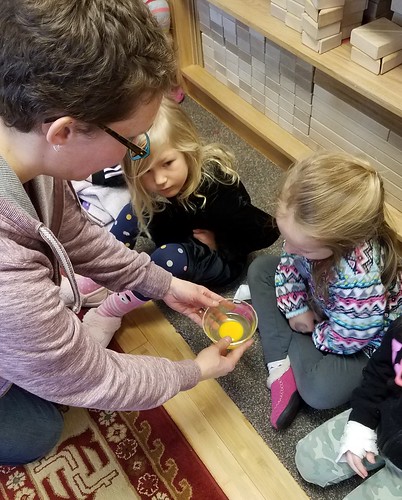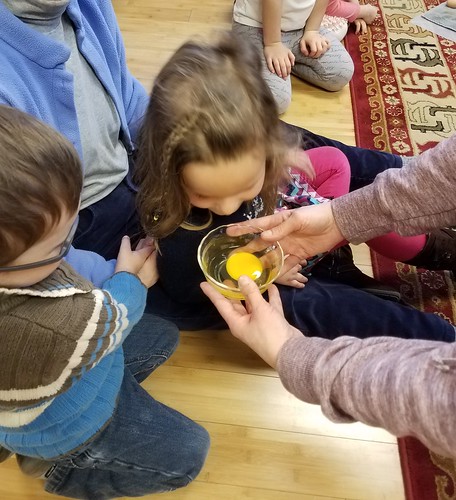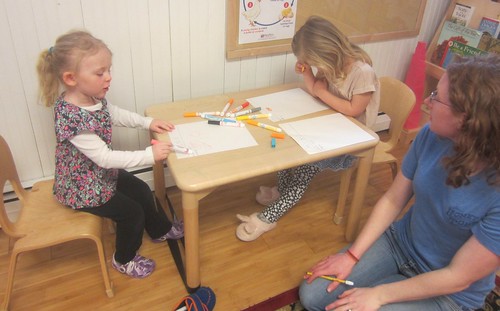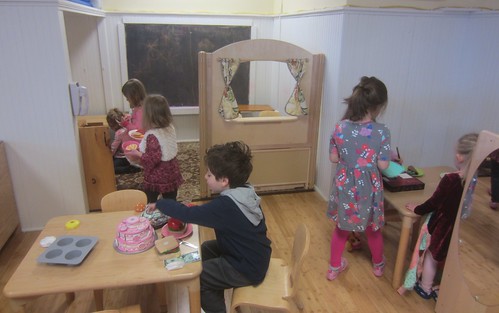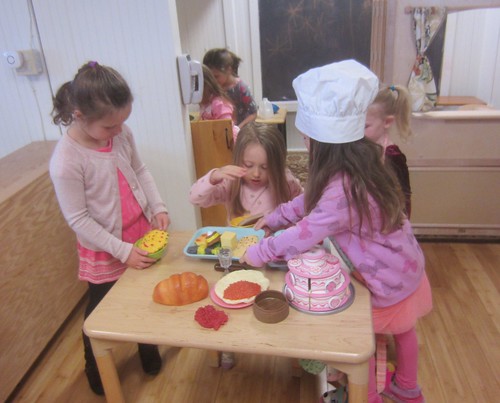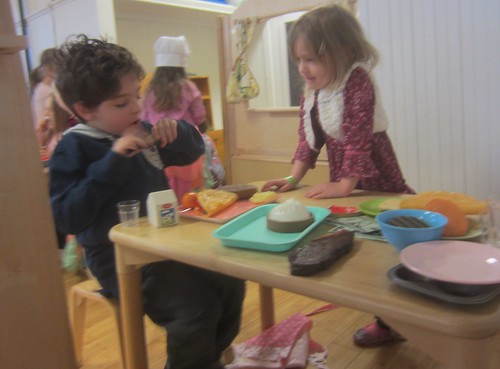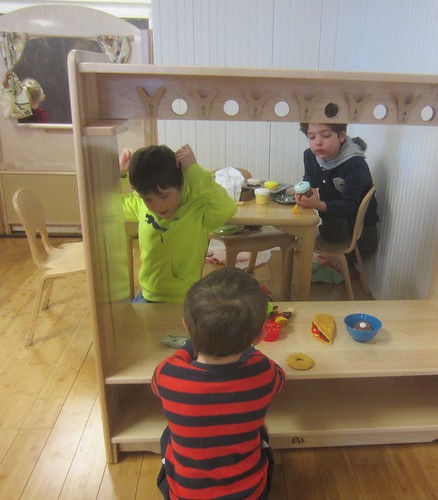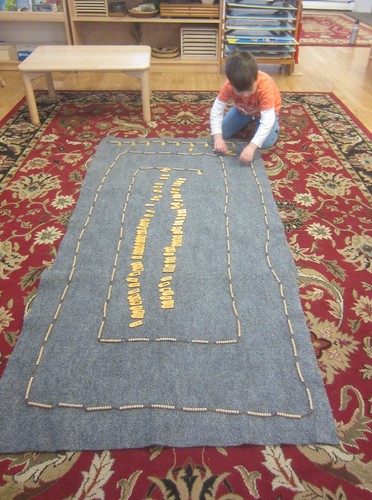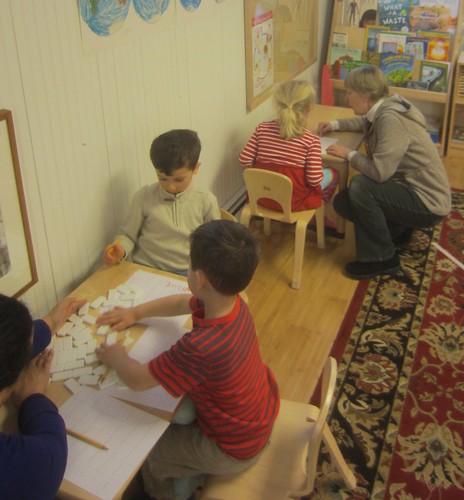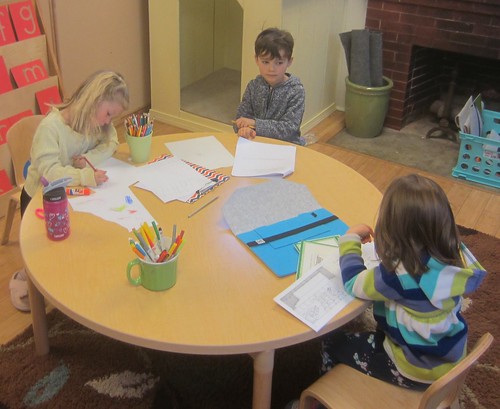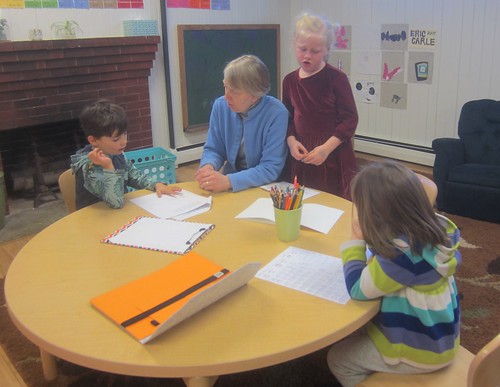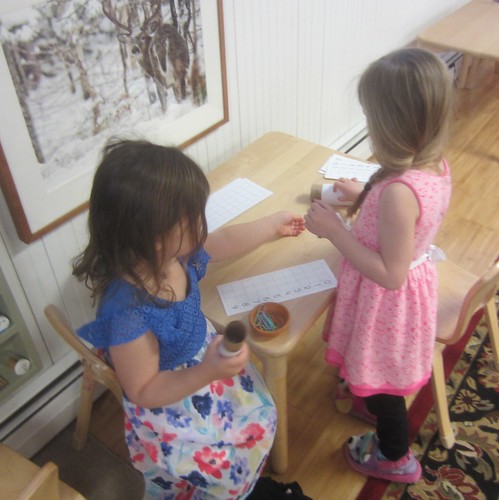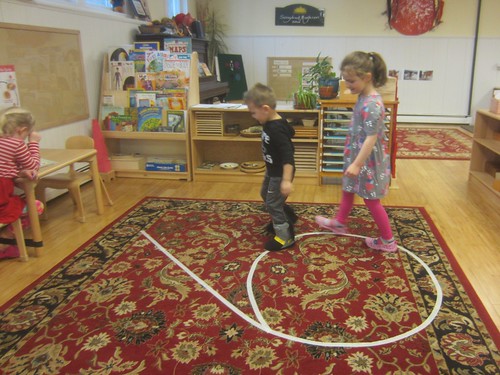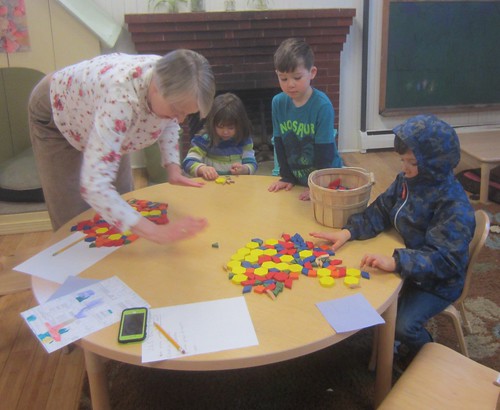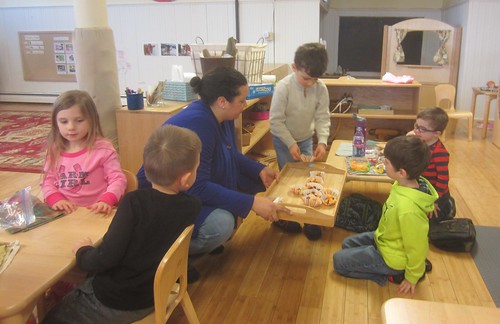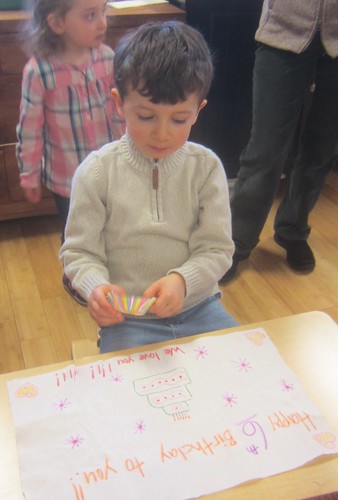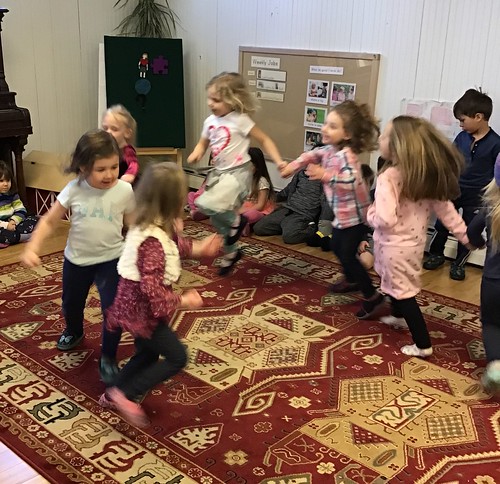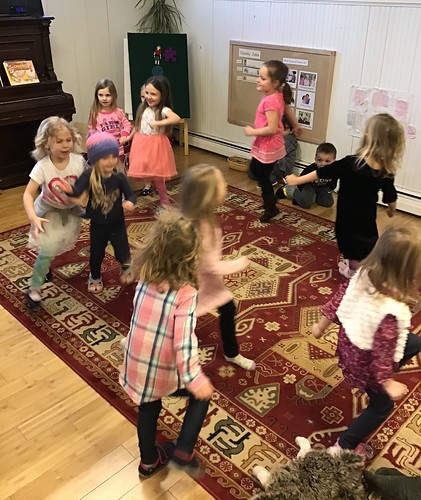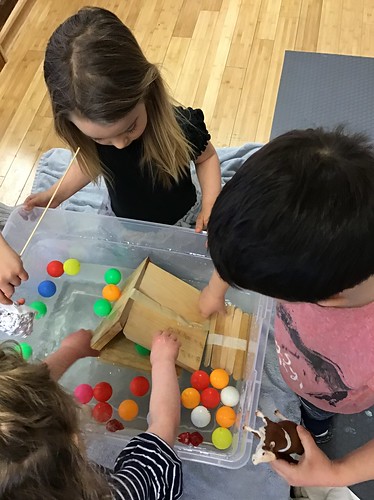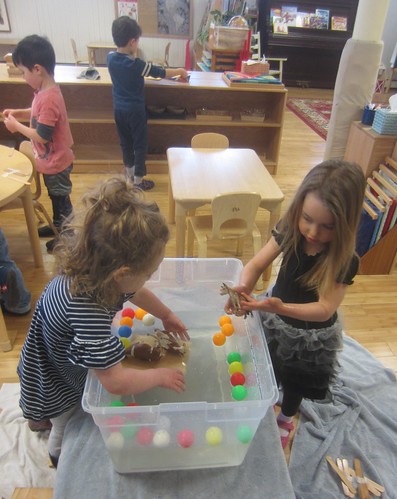Melting snow means lots of great mud, one of our favorite materials to play with! Everyone was busy scooping and pouring muddy water, walking in the puddles, kicking balls, and digging our trench from the puddle under the tree to the back corner. A student collected scoops of black shelled seeds from the bird feeder and dumped them in the trench to help it melt faster because black absorbs heat. This initiated an experiment with Susan. They collected light to dark colored papers and some silver foil and black foil, as well as some black metal trays and a black plastic tray, and placed them around the playground in both sun and shade to see what would happen. The following day, we discovered that the black trays and black foil had sunk further down, having melted the snow underneath, while the snow under the silver foil did nothing. Unfortunately our papers had blown away in the wind, so we were unable to observe any outcomes.
Monday student read The Very Busy Spider by Eric Carle, then each took their painted paper and picture plan that they made last week, and got to work cutting and collaging. Using their picture plans, they drew out the shapes they would need, then cut and pasted them to match their picture plans.
Painting was popular, both at the easel and with watercolors at the table. There was quite a bit of partner painting using monochrome paints at the easel. Some lovely works of art were created.
As of Tuesday morning, our chicks had been incubating for 8 days, so it was time to candle them (hold a flashlight underneath to check development). Some students helped to block out the windows in the kitchen with cardboard to make it nice and dark, then we all found a spot to sit while Alicia brought the eggs in the incubator in. She checked them one at a time, showing us the eggs, and we were able to see the dark eye spot and the baby chicks inside four of the eggs moving! Three eggs did not develop, so we cracked them open to observe. We found that they pretty much looked like eggs we would cook to eat, but one of them had a slight ring around the germ spot. We thought they would smell, but they didn’t, and we got very close to sniff them! We read Where Do Chicks Come From? Which gave lots of detail about how they develop and hatch.
We broke down our theater in dramatic play and voted on a new theme. This time the teachers gave three options of things that we might visit in the community, and we voted between them; a store, a bakery/restaurant, and a post office. They chose bakery/restaurant, and on Wednesday morning the children discussed what they would need and were very anxious to get busy setting up. The kitchen set was pulled out of the back and set up, the dishes and utensils were unearthed, and a variety of restaurant and bakery foods were put into the refrigerator. They set up the cash register, put out tables for customers, and some students worked with a classroom volunteer to create menus. During Thursday morning meeting we discussed the different roles people could play; customer, baker, server, chef, busser, dishwasher, and cashier. We talked about the script that people may use when waiting on customers, such as, “What may I bring for you today?” and “May I clear your plate?.” It was quite a busy area!
We talked about the start of spring and what starts to happen to the length of days and the temperature. We also discussed what is happening with animals (babies are being born) and trees (their sap begins to run). We read Sugarbush Spring about a girl maple sugaring with her family, then everyone who wanted had a taste of some sap and then some maple syrup.
During our discussion of the seasons, we also talked about the months and days in a year. The children learned that there are 365 days in a year, and they know that there are 7 days in a week, so we challenged them to figure out how many weeks are in a year. A group of students chose to work with Susan to solve this question. They decided that if they counted out 365 objects, then put them into groups of 7, they would know the answer. They selected pattern blocks (as there are a lot!) and counted them out. They then counted out groups of 7 and put them in bowls. They found that there were 52 bowls, and one block left over, therefore there are 52 weeks in a year. They presented their findings to the group, lining up their bowls and counting by 10’s to 50, then counted up 2 and one day left over, which Susan explained is actually a quarter of a day, as each year is actually 364.25 days.
We read Talk and Work It Out and chatted with Wolfgang and Henrietta about how to solve a problem when we disagree with a friend or have a conflict. We posed a scenario where someone grabbed some food out of a friend’s hand in dramatic play and we asked the children how it could be solved. A student suggested we ask for the item back and say you can use it when I am done. Henrietta then shared a similar scenario, where Henrietta was building in the block area, and Wolfgang took a block she had set down. Henrietta grabbed it out of his hands, and Wolfgang asked her to ask for a turn rather than taking it, and Henrietta said she had been using it first. They both apologized, and someone suggested that Wolfgang could get another block just like it from the shelf. We saw these scenarios tested out in the classroom and on the playground, and gave reminders that we use our words rather than hands.
Mr. Bond worked with the students to add more pieces to the bird houses, using their strong hand, wrist, arm, and core body strength to twist in the screws.
We celebrated the second 6th birthday of the year with clementines dipped in chocolate. The birthday boy answered questions about the month, season, and day of his birth, as well as how many times the earth rotates on its’ axis in one year, and with a small hint he remembered. After he walked the globe around the candle 6 times, we sang Happy Birthday before enjoying our special treat.
Susan did some fun dancing and moving songs for music on Thursday, and the children had great fun balancing, skipping, galloping, bending, jumping, and sashaying.
Friday students returned to boat building. We again read Who Sank The Boat? then took down our boats from last week. This week the challenge was to not only create a boat that could float, but that could hold something – either round or able to balance on it’s own. There were some aluminum foil wrapped ping pong balls, some tongue depressor rafts, some sponge boats that floated until they became too heavy with water, and the most successful boat was merely a piece of wood which took some cows for a ride, created by our youngest engineer.



